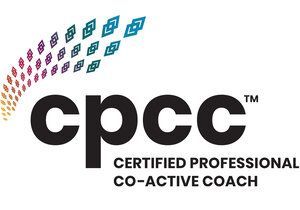Love, Sex, and Relationships in Therapy: A Holistic Approach

As a therapist and tantric practitioner, I've learned that when people come to discuss their relationships, they're often bringing layers of complex emotions and unmet needs. Over the years, I've seen how love, sex, and relationships are so deeply interconnected that you can't address one without impacting the others. Whether you're working on relationship issues alone or with your partner, considering all three together can be the key to significant change.
In therapy, treating these aspects as a whole is where the real transformation happens. It's not about fixing what's broken; it's about helping you create a life and relationship that feel fulfilling, both emotionally and physically.
Why Love, Sex, and Relationships Must Be Treated As A Whole
Emotional and Physical Intimacy
One couple I worked with felt stuck in their relationship. What seemed like communication issues was actually an emotional disconnection directly tied to their lack of physical intimacy. One partner felt shut out emotionally, and as a result, the other was pulling away sexually because he didn't know how to express his feelings. Addressing both their emotional and physical intimacy together led to real shifts in their relationship.
Sexual Health and Relationship Satisfaction
Clients often think their sexual struggles are purely physical, but these issues usually point to something deeper. I worked with a couple whose physical relationship had fizzled out over the years. Avoiding the topic entirely, they didn't realize that the emotional disconnect was affecting their sexual health. Bringing their sexual well-being into the conversation revealed unmet needs, allowing them to rebuild that aspect of their relationship.
Individual Growth vs. Couple Dynamics
Individual growth is just as important as relationship growth. Many clients come to work on their relationship as an individual. Thai could be because their partner doesn’t want to come to therapy; it’s something they can’t or don’t want to discuss with their partner or they’re recovering from divorce or a break up and want to get rid of unhealthy relationship patterns. One client of mine kept attracting the same types of men, which ultimately led to her having negative experiences. Through therapy, she realized her relationship with love and sex had been shaped by unhealed early experiences. By focusing on her own personal healing, she was able to have healthier, more fulfilling relationships.
The Benefits of Holistic Therapy for Love, Sex, and Relationships
Integrative Therapy Approaches
Training in Dr. Tammy Nelson's integrative approach, which treats emotional and sexual intimacy together, has shown me how sexual challenges often mirror our emotional struggles. I worked with a couple married for nearly 20 years who loved each other but the physical spark had gone. It was so important to explore both the emotional and physical aspects of their relationship, and this helped them rebuild intimacy from the inside out.
The Role of Tantra in Strengthening Bonds
Tantra is an invaluable tool for couples looking to reconnect on a deeper level. When people hear the word ‘Tantra’ they immediately think about sex, but there is so much more to it than that.Tantra is actually a spiritual practice that aims to integrate the body, mind, and spirit and includes a range of teachings, meditation and rituals. I remember working with one couple, who felt like they’d lost the closeness they once had after years of marriage. They weren’t sure how to get it back, and the pressure to “fix” their sex life felt overwhelming. I introduced them to some simple Tantra-inspired exercises — not focusing on sex itself, but on breathing together and being fully present with each other. Using small, intentional practices can help couples to find their way back to intimacy. It wasn’t magic; it was simple mindfulness.
Working On Yourself NOT Just Your Relationship
One client loved her partner deeply but felt her own needs were constantly on the backburner. Through therapy, she realized that being in a relationship didn't have to mean neglecting herself. We explored her desires, her personal boundaries, and the importance of loving herself as an individual, which ultimately strengthened her relationship. She found that attending to her own needs made her feel more balanced and was better able to be there for her partner.
How Therapy Can Help Individuals Address Love and Sexuality
Unpacking Your Personal Beliefs About Love and Sex
We all have core beliefs about love and sex, often stemming from our upbringing. One of my clients grew up in a strict household where sex was never discussed and surrounded by shame. As an adult, he struggled to enjoy sex due to this subconscious guilt. In therapy, we unpacked these core beliefs, where they came from and allowed him to question and rewrite these narratives. This shift opened up new possibilities for intimacy in his relationship.
Healing Sexual Trauma and Shame
Sexual trauma can have profound effects on relationships, and it's something I approach with great care. One client that I worked with experienced trauma in her teens had never felt comfortable discussing it. In therapy, we worked through her deep-seated feelings of shame and fear, helping her reconnect with her body in a gentle, safe way using Somatic practices. Seeing her move toward self-acceptance and opening up to relationships and intimacy was very emotional.
Improving Self-Esteem and Sexual Confidence
For some clients, the root issue is a lack of confidence. One client came to me feeling self-conscious about her body and unsure how to communicate her desires. We focused on encouraging her to love her body and soul; and building her self-esteem and sexual confidence. Gradually, she began to see herself differently, becoming more confident not just in the bedroom but in every area of her life.
How Therapy Supports Couples in Navigating Love, Sex, and Relationships
Reigniting Desire
Dr. Nelson's practices for reigniting desire have been transformative for many of my clients. Couples often end up feeling like "roommates" rather than romantic partners. We start by helping them reconnect emotionally, then explore practical ways to reignite physical desire. It's about creating a safe space where desire can naturally revive, not about forcing intimacy.
Communicating Your Needs and Boundaries
Communication is everything in relationships, including discussions about sex. Many couples avoid these conversations for years. Therapy will provide a space to practice talking about needs and boundaries. Once they begin, couples often find their connection deepens in their everyday life in unexpected ways, because of that opening up and honesty.
Tantra-Inspired Practices for Connection
Sometimes, the simple practices create the most powerful changes. Incorporating Tantra-inspired exercises focusing on touch, breath, and presence can help to create a sense of closeness that couples may have thought was gone forever.
Why Address Love, Sex, and Relationships Holistically
Understanding that love, sex, and relationships are interconnected helps everything make more sense. Emotional disconnection can lead to physical distance and vice versa. Looking at the bigger picture rather than fixing one problem at a time allows for finding balance.
Our sexual well-being is closely tied to our emotional and physical health but often gets overlooked or ignored. Focusing on your sexual well-being can impact every area of your life. A healthy, fulfilling relationship—whether with yourself or a partner—is the foundation of a happier, more balanced life.
Integrative Therapy that addresses love, sex, and relationships holistically is where rea, sustainable change happens. By integrating techniques from various therapy styles or Tantra practices, you can create opportunities for lasting change—not just in your relationships but in every area of your life.
For more information, email: info@counselingperspective.com










